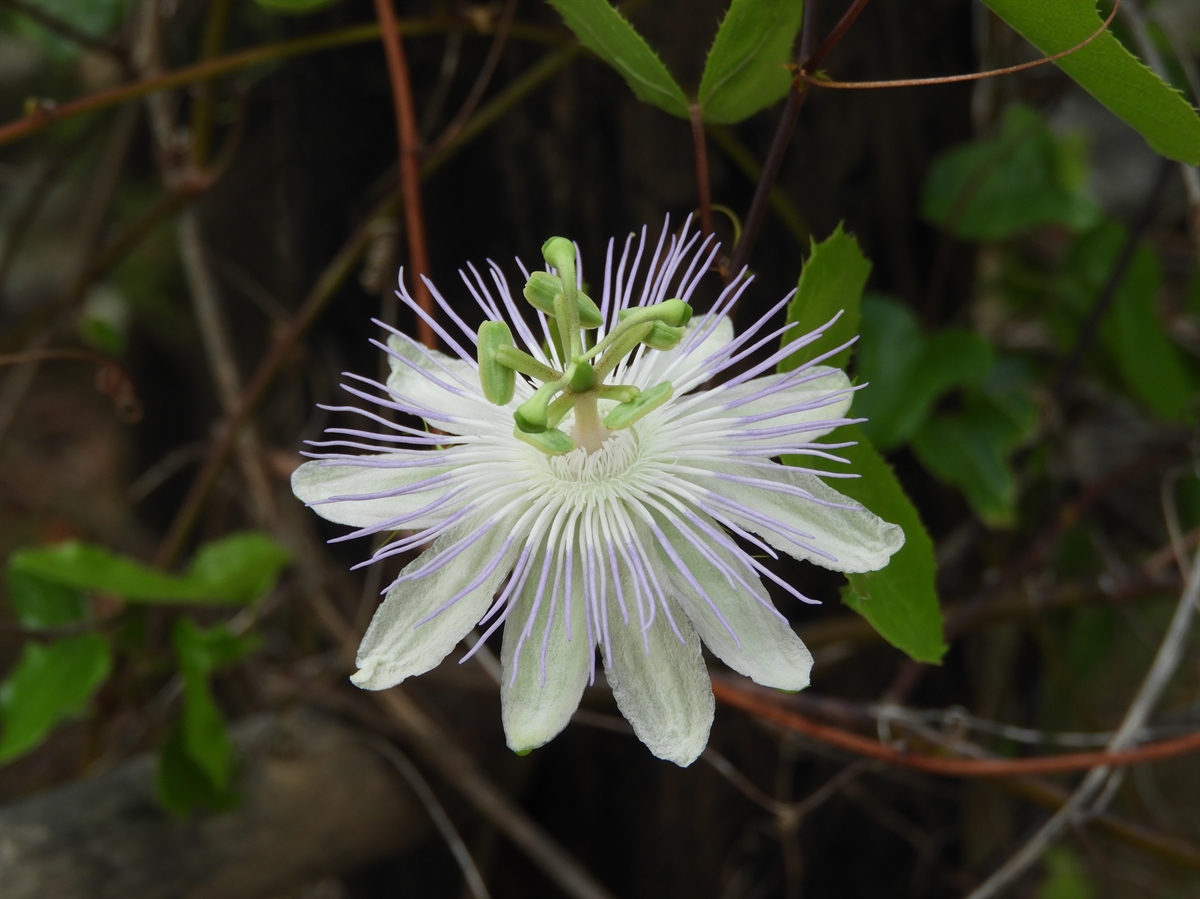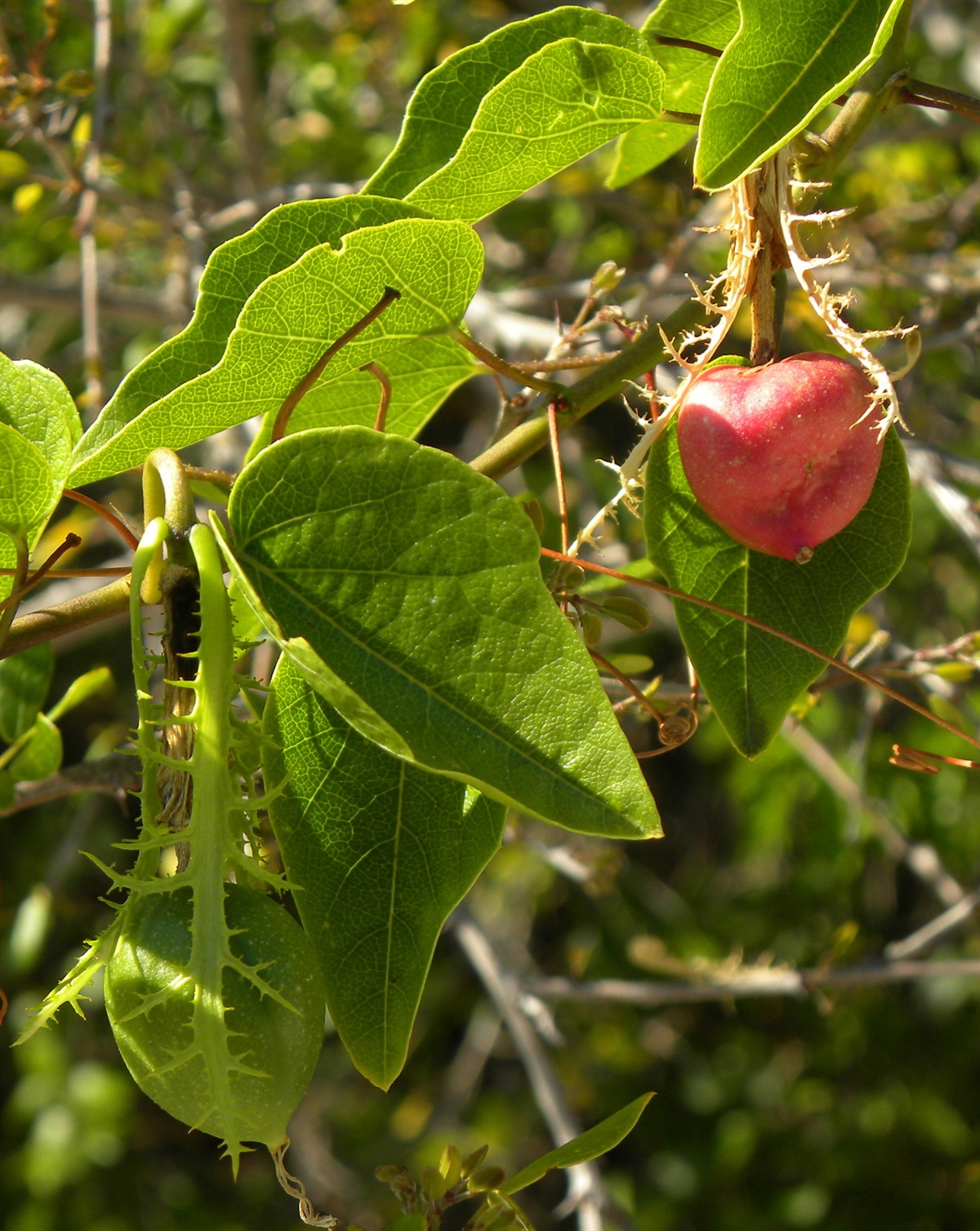Habit: Passiflora pectinata grows as vine with older portions becoming corky with age. The leaves are arranged alternately, to 15 cm in length. The leaves are variable in shape from lanceolate to cordate with a glandular crennate margin. Tendrils are present at the nodes.
The complete, perfect, actinomorphic flowers are arranged in pairs or are solitary in leaf axils. There are pinnatifid bracts below the flower. The calyx has 5 green unfused sepals. There is no corolla. There is a corona with filaments in 2 series. The outer series is white and recurved. The inner series is filamentous and a white color. There are 5 stamens. The ovary is superior, with 3 stigmatic lobes, a single locule and numerous seeds. The fruit is a berry that turns red at maturity.
Habitat: Passiflora pectinata grows in sandy substrates along coastlines including Dunes, and Dry Broadleaf Evergreen Formations – Palm Shrublands.
Distribution: Passiflora pectinata occurs on the central and southern islands within the Lucayan Archipelago as well as Bermuda and Hispaniola.
Medicinal/Cultural/Economic usage: Passiflora pectinata is not used medicinally in the Lucayan Archipelago. The fruits are edible although not particularly tasty.


